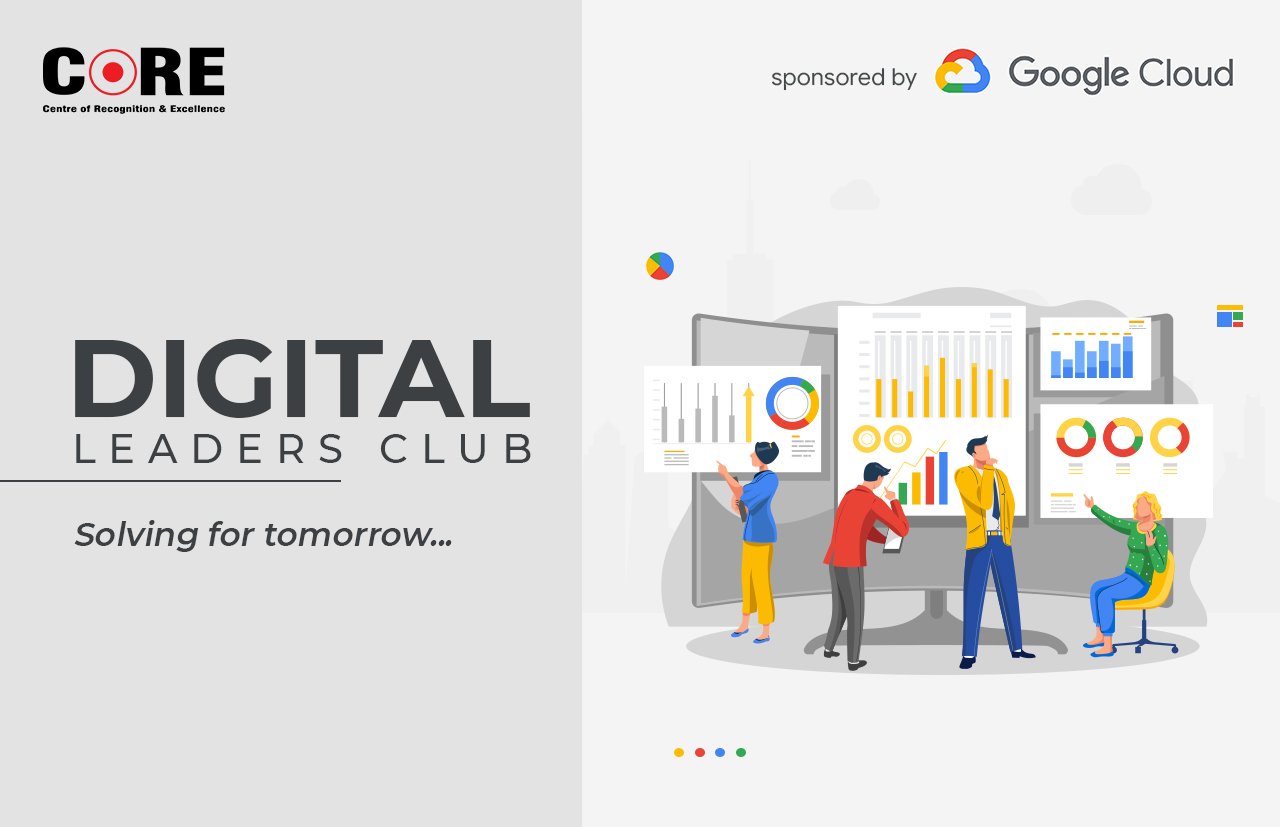- The need for agility and scalability is driving strategic cloud conversations among enterprises
- Digital is the cornerstone of CIOs’ mid to longer-term technology roadmaps
IT leaders are optimistic about the opportunities and potential presented by the future. Technology investments will continue to grow as every organisation eventually has realised that technology is not just an enabler, but the biggest business driver.
The latest edition of “Digital Leaders Club”, curated by CORE Media and Google Cloud India, saw meaningful discussions among CIOs and Google India executives, who exchanged cross-industry perspectives on how enterprises are looking at mid to long-term priorities to prep up for the future.
“Digitization has touched every aspects of our lives and enterprises are responding quickly to see how they can leverage these opportunities. Some of the key priorities that we see getting highlighted by tech leaders is around infrastructure and app modernisation, smart analytics, Industry 4.0 and so on, to make decisions going forward. Enterprises are leveraging Cloud like never before and are grabbing every opportunity coming their way to adopt modern technologies,” said Anoop Mathur, Founder & President, CORE Media, who moderated the discussion attended by CIOs from diverse backgrounds in the industry along with Google experts.
Acknowledging how long-term strategies were evolving with CIOs putting on their thinking caps to ensure agility and business continuity, Kamolika Peres – Director, Google Cloud India felt that it was clear that some of the changes that were set in motion by businesses have actually proved to be more long-term and will continue to play out going forward.
“The need for agility is something that is driving the conversation on cloud adoption. The agility and the scale that Cloud offers are helping enterprises build competitive advantage in their respective markets. The decision-making cycles and the need for showing faster results on IT/digital initiatives have become standard across the board,” Kamolika added.
With the automotive sector always being a front-runner when it comes to innovation, a CIO of an auto ancillaries manufacturing unit said, “Since we have a global footprint, we have adopted different technologies and methodologies, with some in-house and some on Cloud. So, hybrid cloud is certainly the way forward in our transformation journey. A hybrid model enables us to leverage the true potential of IIoT while maintaining data confidentiality.”
In response to the above discussion, Rajesh Shewani – Customer Engineering Manager, Google Cloud India said, “Decision-making ability to adopt new technologies, and the need to show results have become a top priority in driving cloud adoption among CIOs. Predictive analytics and visual analytics are driving actionable business insights and forecasting, especially in the manufacturing sector. At Googe Cloud India, we are looking at where can we speed out the efficiency at every step in the process - right from the R&D to product development, the simulation of different conditions, virtual testing, etc. We are also working with the whole supply chain traceability – both inbound and outbound. We are also bringing in our own experience in this field.”
Another CIO of a textiles and manufacturing company informed that since they had already moved to Cloud before the pandemic, it helped them in terms of business continuity. “The two lockdowns did impact us. The need of the hour is to be agile because we can’t have things so meticulously planned out as we don’t know how the circumstances are going to be next. We realised that long-term strategies have to be evolved now supported by technology initiatives. Our business strategies are getting realigned and based on our IT/digital initiatives, we will be looking at our IT road map for the next couple of years.”
The CIO also emphasized that even conservative organizations in the manufacturing sector are now showing greater interest towards use cases such predictive maintenance. Most importantly, the management and boards are realising the power of leveraging technology,” she concluded.


